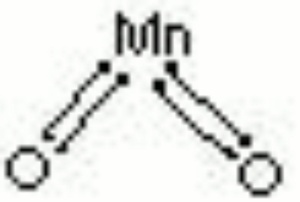Difference between revisions of "Manganese black"
(username removed) |
(username removed) |
||
| Line 5: | Line 5: | ||
== Synonyms and Related Terms == | == Synonyms and Related Terms == | ||
| − | manganese brown; Pigment Black 14; CI 77728; Manganschwarz (Deut.); negro de manganeso (Esp.); noir de | + | manganese brown; Pigment Black 14; CI 77728; Manganschwarz (Deut.); negro de manganeso (Esp.); noir de manganèse (Fr.); mayro toy magganioy (Gr.); mangaanzwart (Ned.); negro de manganês (Port.) |
{| class="wikitable" | {| class="wikitable" | ||
Revision as of 06:44, 24 July 2013
Description
A brownish-black synthetic pigment composed of manganese dioxide and/or other black manganese compounds such as jacobsite (MnFe2O4). Manganese was first used as a ceramic glaze in the Near East as early as the seventh millennium (Schweizer and Rinuy 1982). It was prepared from manganese ores and fired to produce a dark brown to black glaze. As a paint pigment manganese black was patented in England in 1871 by Rowan. It is was never commonly used, but is sometimes found in inexpensive house paints and as a drier in artists oil paints.
Synonyms and Related Terms
manganese brown; Pigment Black 14; CI 77728; Manganschwarz (Deut.); negro de manganeso (Esp.); noir de manganèse (Fr.); mayro toy magganioy (Gr.); mangaanzwart (Ned.); negro de manganês (Port.)
| Composition | MnO2 |
|---|---|
| CAS | 1313-13-9 |
| Molecular Weight | mol. wt. = 86.94 |
Hazards and Safety
Inhalation can cause a flu-like illness. Ingestion may cause nausea and hypoglycemia.
Mallinckrodt Baker: MSDS
Additional Information
F.Schweizer, A. Rinuy, "Manganese Black as An Etruscan Pigment" Studies in Conservation, 27:118-123, 1982.
